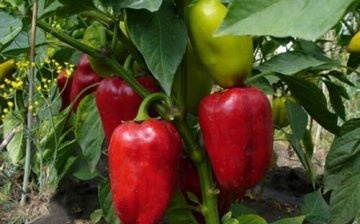Growing pepper in the open field
Bell peppers belong to the nightshade family. His agricultural technology is not much different from that of tomatoes, but you need to take into account some of the nuances inherent in this particular plant. It tolerates drafts and temperature changes very poorly, so in the middle lane they are usually grown in greenhouses. Growing pepper in the open field only makes sense if you choose early maturing varieties. Productivity in this case largely depends on the choice of location. It should be sunny and sheltered from the wind, such as a hedge, greenhouse wall or higher crops.
Pepper does not like clay, acidic and alkaline soils. It cannot be planted after potatoes and tomatoes, since they have common diseases and pests. The soil is prepared in the fall, adding compost and superphosphate to it, or in the spring, digging it up with humus and ash. Seedlings should be planted after the risk of spring frost has disappeared. As you know, peppers do not tolerate a transplant very well and can hurt for a long time after it, so you need to try not to damage the root system. Land in cloudy weather or at least in the evening.
A couple of weeks after planting, during flowering and fruit setting, feed the plant with mineral or organic fertilizers. Do not let the soil dry out as well. When growing pepper in the open field, after each watering or rain, the soil should be loosened so that a crust does not form. To increase fruiting, peppers are best harvested in a state of technical ripeness. They ripen well indoors, similar to tomatoes.




This season I discovered a variety of pepper - my namesake - "Lyuba". My delight knew no bounds, the variety is excellent, fruitful, very aromatic and sweet. Not very whimsical to the soil, but loves feeding. Sowed on seedlings, and then - in open ground. I will definitely take advantage of the author's advice, I hope that next season the harvest will also delight, and I recommend "Lyuba" to all pepper lovers.